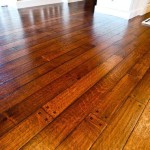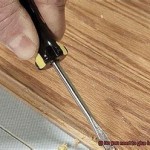How to Install Vinyl Plank Flooring Over Cement
Installing vinyl plank flooring over a cement subfloor is a popular and cost-effective way to upgrade the look and feel of a space. Vinyl plank offers durability, water resistance, and ease of maintenance, making it a suitable choice for various rooms, including basements, kitchens, and bathrooms. Proper preparation and installation techniques are crucial to ensure a long-lasting and aesthetically pleasing result. This article provides a comprehensive guide on how to successfully install vinyl plank flooring over a cement subfloor.
Key Point 1: Preparing the Cement Subfloor
The first, and arguably most important, step in installing vinyl plank flooring over cement is thorough preparation of the subfloor. A clean, level, and dry surface is essential for proper adhesion and to prevent future issues like buckling or unevenness.
Cleaning the Subfloor: Begin by thoroughly cleaning the cement subfloor. This involves removing any existing debris, dust, dirt, paint residue, or adhesives. A shop vacuum is useful for removing loose particles. For stubborn stains or residues, scrub the floor with a suitable cleaner and a stiff-bristled brush. Rinse thoroughly with clean water, ensuring all traces of the cleaner are removed. Allow the floor to dry completely.
Leveling the Subfloor: Cement floors are often uneven, with variations that can impact the final appearance and performance of the vinyl plank flooring. Use a long straightedge (at least 6 feet) and a level to identify any high or low spots. Mark these areas for correction.
For low spots (depressions), use a self-leveling compound specifically designed for cement floors. Follow the manufacturer's instructions carefully regarding mixing and application. Pour the compound onto the affected area and allow it to flow and self-level. Use a spiked roller to remove any air bubbles and ensure a smooth surface. Allow the compound to cure completely, as per the manufacturer's recommendations.
For high spots (protrusions), grinding is typically required. Use a concrete grinder with a diamond grinding wheel to carefully remove the excess material. Wear appropriate safety gear, including a dust mask, eye protection, and ear protection. Grind slowly and evenly, checking frequently with the straightedge and level to avoid removing too much material. Vacuum up the dust generated by the grinding process.
Testing for Moisture: Cement is porous and can wick moisture from the ground. Excess moisture can lead to adhesive failure, mold growth, and warping of the vinyl plank flooring. It is crucial to test the moisture level of the subfloor before installation.
Several methods can be used to test moisture:
- Calcium Chloride Test (Moisture Dome Test): This is a more accurate method that involves placing a sealed container with calcium chloride on the floor for a specific period (usually 72 hours). The calcium chloride absorbs moisture from the cement, and the weight gain is measured to determine the moisture vapor emission rate (MVER). The manufacturer of the vinyl plank flooring will specify the acceptable MVER for their product.
- Plastic Sheet Test: Tape a 2' x 2' clear plastic sheet to the cement floor, sealing all edges with duct tape. Leave it in place for 24-72 hours. After this time, check for condensation under the plastic sheet. If condensation is present, the moisture level is too high, and further action is required.
- Moisture Meter: A moisture meter can provide a quick reading of the moisture content in the cement. However, ensure the meter is calibrated correctly and designed for use on concrete.
If the moisture level is too high, consider installing a moisture barrier. This can be a liquid-applied membrane or a sheet membrane, depending on the manufacturer's recommendations and the severity of the moisture issue. Follow the manufacturer's instructions carefully for application and curing.
Key Point 2: Acclimation and Planning
After preparing the subfloor, the next crucial step involves acclimating the vinyl plank flooring to the environment where it will be installed and carefully planning the layout to minimize waste and maximize aesthetic appeal.
Acclimation: Vinyl plank flooring needs to acclimate to the room's temperature and humidity levels before installation. This acclimatization period allows the planks to expand or contract, preventing issues like gaps or buckling after installation. Store the unopened boxes of vinyl plank flooring in the room where they will be installed for at least 48-72 hours prior to installation. The room temperature should be consistent with the typical living conditions. Avoid areas with direct sunlight or drafts.
Planning the Layout: Measure the room's dimensions accurately and create a floor plan. This will help determine the amount of flooring needed and identify the best starting point for installation. Consider the direction of the planks. Generally, running the planks parallel to the longest wall creates a more visually appealing and spacious effect. However, consider the room's light source and any existing architectural features when making this decision.
To minimize waste, calculate the number of planks needed for each row and adjust the starting point accordingly. Stagger the end joints of adjacent rows to create a more natural and visually appealing appearance. A common approach is to use a random stagger pattern, where the end joints are offset by at least 6 inches. When you reach the walls, use a T-square and utility knife to cut the planks as needed. Leave an expansion gap of approximately ¼ inch around the perimeter of the room to allow for expansion and contraction.
Choosing the Right Adhesive (If Required): Some vinyl plank flooring products are designed for "floating" installation, meaning they don't require adhesive. Others, especially those intended for commercial use or areas with high traffic, may require adhesive. If adhesive is necessary, select an adhesive specifically recommended by the vinyl plank flooring manufacturer for use with their product and on cement subfloors. Different adhesives have different properties, such as open time, curing time, and moisture resistance. Follow the manufacturer's instructions for adhesive application carefully.
Key Point 3: Installation Techniques
The actual installation process requires patience, precision, and attention to detail. Adhering to the correct techniques will ensure a professional-looking and long-lasting result.
Starting the Installation: Begin installing the planks along the longest straight wall, leaving the ¼ inch expansion gap. Use spacers to maintain this gap. For click-lock planks, engage the tongue and groove system at an angle and then press down firmly to lock the planks together. Use a tapping block and a rubber mallet to gently tap the planks into place, ensuring a tight seam.
Cutting Planks: When you reach the end of a row or need to fit around obstacles, use a T-square and utility knife to score the plank along the cut line. Then, snap the plank along the score line. For more intricate cuts, a jigsaw may be necessary. Always wear safety glasses when cutting planks.
Working Around Obstacles: When you encounter obstacles like pipes or door jambs, carefully measure and cut the planks to fit around them. Use a coping saw or oscillating multi-tool for precise cuts. Consider using a template to trace the shape of the obstacle onto the plank before cutting.
Installing Subsequent Rows: Continue installing the planks row by row, staggering the end joints as planned. Ensure that each plank is securely locked into place before moving on to the next. Periodically check the alignment of the rows to ensure they are straight and square.
Dealing with Imperfections: As you install the flooring, you may encounter minor imperfections, such as small gaps or uneven seams. Use a seam roller to press the planks together and eliminate any small gaps. For larger imperfections, carefully remove the affected plank and reinstall it correctly. If necessary, use a small amount of adhesive to secure the plank in place.
Finishing the Installation: Once all the planks have been installed, remove the spacers around the perimeter of the room. Install baseboards or quarter-round molding to cover the expansion gap and provide a finished look. Use a suitable sealant or caulk to seal any gaps around pipes or other fixtures. Allow the adhesive (if used) to cure completely before allowing heavy traffic on the floor.
Post-Installation Care: After the installation is complete, clean the floor with a damp cloth and a mild detergent. Avoid using abrasive cleaners or scouring pads, as these can damage the surface of the vinyl plank flooring. Follow the manufacturer's recommendations for ongoing maintenance and care.
By following these steps carefully, anyone can successfully install vinyl plank flooring over a cement subfloor, transforming the appearance and functionality of their space.

How To Install Vinyl Or Laminate Floors In A Basement Over Concrete Slab

How To Prepare A Concrete Floor For Vinyl Flooring Parrys

Easy Ways To Install Vinyl Plank Flooring On Concrete

Tips For Installing Vinyl Plank Over Concrete Floors Lemon Thistle

Easy Ways To Install Vinyl Plank Flooring On Concrete

How To Install Vinyl Or Laminate Floors In A Basement Over Concrete Slab

Best How To Install Vinyl Plank Flooring Four Generations One Roof

Tips For Installing Vinyl Plank Over Concrete Floors Lemon Thistle

Installing Laminate Flooring Over Concrete The Ultimate Guide Aa Floors

How To Install L And Stick Vinyl Plank Flooring Floor Preparation
Related Posts








